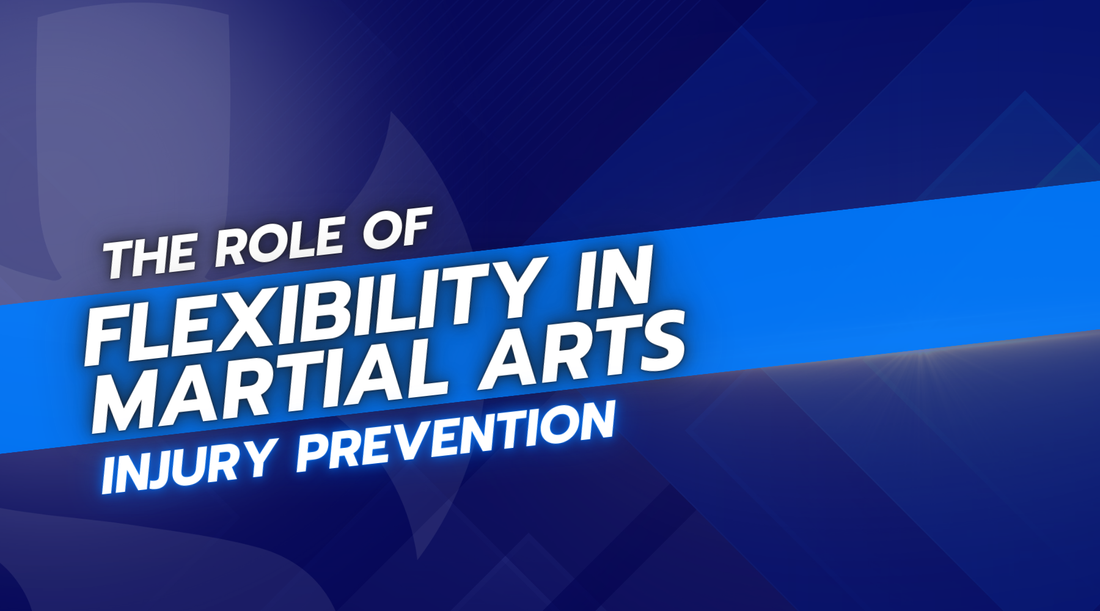
The Role of Flexibility in Martial Arts Injury Prevention
Share
Flexibility often takes a backseat to strength and endurance in martial arts training. Yet, it plays a critical role in enhancing performance and preventing injuries. This article dives into the significance of flexibility in martial arts, how it helps in injury prevention, and offers practical tips for incorporating effective flexibility training into your routine.
Understanding Flexibility
Flexibility refers to the ability of muscles and joints to move through their full range of motion. It encompasses:
- Static Flexibility: The ability to hold a stretch for a period of time.
- Dynamic Flexibility: The ability to move muscles and joints through their full range of motion in an active manner.
Benefits of Flexibility in Martial Arts
Flexibility offers numerous benefits for martial artists, including:
- Enhanced Performance: Improved flexibility can lead to better execution of techniques and greater ease in performing complex movements.
- Injury Prevention: Flexible muscles and joints are less prone to strains and sprains.
- Improved Technique: Greater flexibility allows for more precise and fluid movements.
Common Martial Arts Injuries
Martial artists often face injuries such as:
- Sprains and strains
- Joint injuries
- Muscle tears These injuries are often caused by overuse, improper technique, or lack of flexibility.
The Connection Between Flexibility and Injury Prevention
Flexibility helps reduce the risk of injuries by:
- Allowing joints to move freely and reducing the likelihood of overstretching or tearing muscles.
- Supporting better body mechanics and technique, which minimizes undue stress on muscles and joints.
Dynamic vs. Static Stretching
- Dynamic Stretching: Involves active movements that stretch muscles without holding the position. Ideal for warming up.
- Static Stretching: Involves holding a stretch for a longer period. Best for cooling down.
For martial arts, incorporating both types can provide the best results.
Flexibility Training Techniques
- Static Stretching: Hold stretches for 15-30 seconds. Examples include hamstring stretches and calf stretches.
- Dynamic Stretching: Perform controlled leg swings, arm circles, and other movements.
- PNF Stretching (Proprioceptive Neuromuscular Facilitation): A more advanced technique that involves both stretching and contracting the muscle group being targeted.
Creating a Flexibility Routine
A balanced flexibility routine for martial artists should include:
- Frequency: Stretching 3-5 times a week.
- Duration: Each session should last 10-20 minutes.
- Example Routine: Start with dynamic stretches, proceed with your training, and end with static stretches.
Flexibility in Different Martial Arts Disciplines
Different martial arts emphasize different aspects of flexibility:
- Karate: Requires flexibility for high kicks and rapid movements.
- Taekwondo: Focuses on leg flexibility for various kicking techniques.
- Judo: Emphasizes overall body flexibility for throws and grappling.
- Brazilian Jiu-Jitsu: Requires flexibility for ground movements and submissions.
Role of Warm-Ups and Cool-Downs
Proper warm-ups and cool-downs are crucial for injury prevention:
- Warm-Up: Incorporate dynamic stretches to increase blood flow and prepare muscles.
- Cool-Down: Use static stretching to relax muscles and improve flexibility post-training.
Flexibility and Age
Flexibility needs vary with age:
- Young Martial Artists: Focus on dynamic flexibility to support growth and development.
- Older Practitioners: Emphasize gentle, consistent stretching to maintain flexibility and prevent injury.
Common Myths About Flexibility in Martial Arts
- Myth: Flexibility is only for gymnasts. Fact: Flexibility is essential for all athletes, including martial artists.
- Myth: Stretching before training is unnecessary. Fact: Proper stretching can prevent injuries and enhance performance.
Flexibility Tools and Accessories
Incorporate tools to enhance flexibility training:
- Stretching Bands: Assist in deepening stretches.
- Foam Rollers: Help release muscle tension and improve flexibility.
- Other Tools: Such as yoga blocks and straps, can aid in achieving better stretches.
Flexibility and Overall Fitness
Balance flexibility with other fitness elements:
- Strength Training: Combine with flexibility to support muscle balance.
- Cardio Training: Ensure overall fitness and endurance.
Final Thoughts
Flexibility is a cornerstone of martial arts training, significantly contributing to performance and injury prevention. By incorporating regular flexibility exercises and understanding their importance, martial artists can enhance their practice and longevity in the sport.
